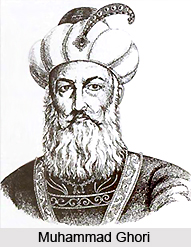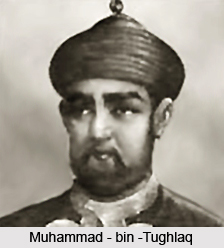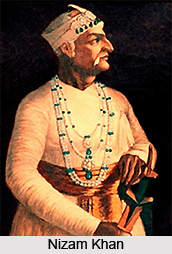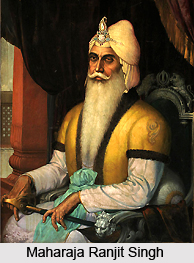 Medieval history of India comprises of reigns and influences of a number of dynasties which ruled over the country in ancient past. Various kingdoms in India have left a deep impact on different aspects of the country including art, literature, architecture, administration and many more. The country was ruled by several empires at a time and medieval history of India also narrates the numerous battles that were fought between different dynasties for the expansion of their own kingdom.
Medieval history of India comprises of reigns and influences of a number of dynasties which ruled over the country in ancient past. Various kingdoms in India have left a deep impact on different aspects of the country including art, literature, architecture, administration and many more. The country was ruled by several empires at a time and medieval history of India also narrates the numerous battles that were fought between different dynasties for the expansion of their own kingdom.
Chola Dynasty
Chola dynasty ruled over India for a long period of time. The origin of this dynasty in India can be traced back to 3rd century BC and it continued to 13th century AD. Their major concentration was found in the valley of Kaveri River, but their kingdom gradually spread over larger areas. The dynasty left a deep impact on the evolution and development of Tamil literature. During this era, the whole of south India was under a single administration. Art, culture and foreign trade were highly developed during this period.
Hoysala Empire
After Chola dynasty, Hoysala Empire gained prominence during the period of 10th to 14th century. The rulers of this dynasty mainly belonged to Malnad, Karnataka. They took advantage of the war between Western Chalukyas and Kalachuri kingdoms and captured some of the areas of Kaveri river delta and greater parts of present day Tamil Nadu and Andhra Pradesh. Religion, art and architecture flourished greatly during this period and temple architecture of this era are still greatly praised.

Kakatiya Dynasty
Kakatiya dynasty is another prominent dynasty which ruled between the periods of 1083 CE to 1323 CE. The rulers of this empire were originally Jains but later emerged as Shaivite Hindu. The reign of this empire lasted for a long time up to the advent of Delhi Sultanate. The notable rulers of this dynasty were Rudrama Devi and Prataparudra. Their empire spanned up to the western India. Numerous administrative reforms were introduced during this period. The decline of Kakatiya dynasty occurred with the conquest of south India by Alauddin Khilji in 1296 CE.
Rajput Kingdoms
Rajputs dominated the northern parts of India from 9th to 11th centuries. They became the primary hindrance to the Mughals in their conquest of India. Rajputs maintained their power in the regions of Rajasthan and central India even after their northern territory was captured by the Muslim invaders.
Delhi Sultanate
The golden period of medieval history began with the Turkish conquests led by Mahmud of Ghazni. Following his footsteps, Muhammad Ghori carried on the invasions in the soils of Indian Territory. At the battle of Tarain, he overpowered Prithviraj Chauhan, the Tomar ruler of Delhi, in the year 1192. After victory in the war, he left India and his deputy, Qutub-ud-din Aibak, reigned from 1206 A.D to 1210 AD. As he belonged to a family of slaves, the dynasty that he built is popular as the Slave dynasty. It was him who built the towering Qutub Minar in Delhi. His successor Iltutmish carried forward the legacy during his rule starting from 1210 to 1236 AD.

The lineage of Indian kings after Razziya, namely, Khiljis, Tughlaqs, Sayyids and Lodhis valiantly adopted the footsteps of the Slave rulers. This period is known as the Delhi Sultanate. They were popular in the medieval history for their valour and statesmanship. Allauddin Khilji ruled from 1296 to 1316. Another eminent ruler of medieval history of India was Muhammad bin Tughlaq. His tenure began from 1324 and ended on 1351. He was a visionary and was endowed with a keen intellect, proficient in various branches of learning like logic, philosophy and mathematics. Feroz Shah Tughlaq too was an important ruler of the medieval history.
Sayyid Dynasty
The next Indian dynasty that illuminated the medieval history of India is the rulers of Sayyid dynasty. Khizr Khan founded the Saiyyid Empire. The Sayyids reigned from about 1414 AD to 1450 AD. In 1412 AD, they conquered Gujarat, Gwalior and Jaunpur. In 1416, he defeated Bayana and in 1421AD he attacked Mewat. After his death few rulers reigned for quite some time. The empire came to an end in 1451 AD with the death of the last ruler Muhammad-bin-Farid.
Lodhi Dynasty
Behlol Lodhi founded the Lodhi dynasty and thus started a new era of the medieval history of India. After coming to the throne in 1451 AD he appeased the rebelling nobles and Jagirdars. He gave jagirs to the Afghan nobles to win their cooperation and brought Mewar, Sambal and Gwalior under his rule. Bahlul Lodhi nominated his son Nizam Khan as his successor. But the nobles placed Barbak Shah on the throne. Barbak Shah was appointed as the governor of Jaunpur. He brought Gwalior and Bihar under his rule. Though he was a religious fanatic yet he brought changes in some of the practices of the Muslims. He encouraged education and trade. His military skill helped him in bringing the Afghan nobles under his control.
Sikandar Lodi defeated Barbak Shah who in co-operation with Hussain Shah of Jaunpur fought against him. Ibrahim Lodi who is said to have been the last great ruler of the Lodhi dynasty succeeded Sikandar Lodi. He came to the power in 1517 AD. His relations with the Afghan nobles became worse and this led to several conflicts with him. The discontented Afghan chiefs sent Daulal Khan Lodhi to invite Babur the king of Kabul to India. In the year 1525 and1526 Babur defeated Ibrahim Lodi in the battle of Panipat. With this defeat, Delhi Sultanate was laid to rest.

Mughal Dynasty
Medieval history of India got a new shape and dynamism with the coming of Babur. This was the beginning of the new era of Mughal rulers. Babur who reigned from 1526-30 was the founder of the Mughal Empire in India. There was a brief interruption to Mughal rule when Babur`s son Humayun (reign - 1530-40) was ousted from Delhi, by Sher Shah, an Afghan chieftain. The credit goes to the grandson of Babur for extending the Mughal rule by leaps and bounds. In medieval history of India he was the most significant ruler for his achievements as well as his good administration.
Jahangir (reign - 1605-27) who succeeded Akbar was a pleasure loving man of refined taste. Shah Jahan (1628-58), his son, ascended the throne next. Shah Jahan`s fame rests on the majestic buildings he has left behind viz. the Taj Mahal, the Red Fort and the Jama Masjid. His successor, Aurangzeb (reign - 1658-1707) was a brave general and an able administrator. However his staunch policies of expanding the empire brought about the fall of the Mughal Empire.
Ahom Kingdom
Ahom kingdom was another kingdom of medieval India which ruled over the Brahmaputra valley in Assam for about 600 years and resisted the invasion of Mughals in the north east India. It was established in 1228 by Chao Lung Siu-Ka-Pha, the first Ahom King. The expansion of the kingdom was quite rapid and influences of numerous regions led to a multi ethnic kingdom. Repeated Mughal attacks could not weaken the kingdom, instead the battles resulted in expanding their boundaries up to the Manas River in the west. When the kingdom went over to its last kings, the Tungkhungia kings, social conflicts became prominent in the kingdom. Repeated Burmese attacks further weakened the kingdom and finally they surrendered themselves to the British India.
Reddy Dynasty
Reddy dynasty ruled over southern India since 1325 to 1448 CE. The origin of this clan dates back to Kakatiya period when the Reddy chiefs were appointed as soldiers. This clan fought hard against the invasion of Delhi Sultanate and after the decline of Kakatiya kingdom, established their independent kingdom. Telugu literature blossomed during this period. Important rulers of this kingdom were Anavota Reddy, Anavema Reddy, Kumaragiri Reddy, Kataya Vema Reddy, Pedakomati Vemareddy, Racha Vema Reddy, Gondesi Reddy and Veerabhadra Reddy. Their reign continued up to the middle of 15th century till it came under the rule of Vijayanagar Empire.
Vijayanagar Empire
Vijayanagar Empire also dominated south India. It emerged at the end of 13th century and lasted till 1646 AD. The rich cultural legacy of the kingdom can be witnessed in the plethora of monuments spread all over the country as the testaments of brilliant architecture. Hinduism was greatly promoted during this era. The decline of this empire was brought about by the Deccan Sultanates.
Gajapati Empire
Gajapatis spanned their kingdom over the Kalinga, which is the present day Orissa, West Bengal, Andhra Pradesh, Bihar and Madhya Pradesh during the period of 1434-1541AD. Purushottama Deva, Prataparudra Deva and Kakharua Deva were some of the significant rulers of the dynasty. Literature and architecture during Gajapati Kingdom attained great heights.
Sikh Empire
Sikh Empire gained power in India under the leadership of Maharaja Ranjit Singh, around Punjab. It established from 1799, the time when the decline of Mughal Empire began. The downfall of Sikh Empire occurred after their defeat in Anglo-Sikh wars by 1849.
Medieval history of India is marked by the heritage of efficient rulers, thereby contributing to the country`s richness of heritage and ethnicity. This can still be witnessed in the monuments, ancient texts and different art forms that are still existent in the country.






































